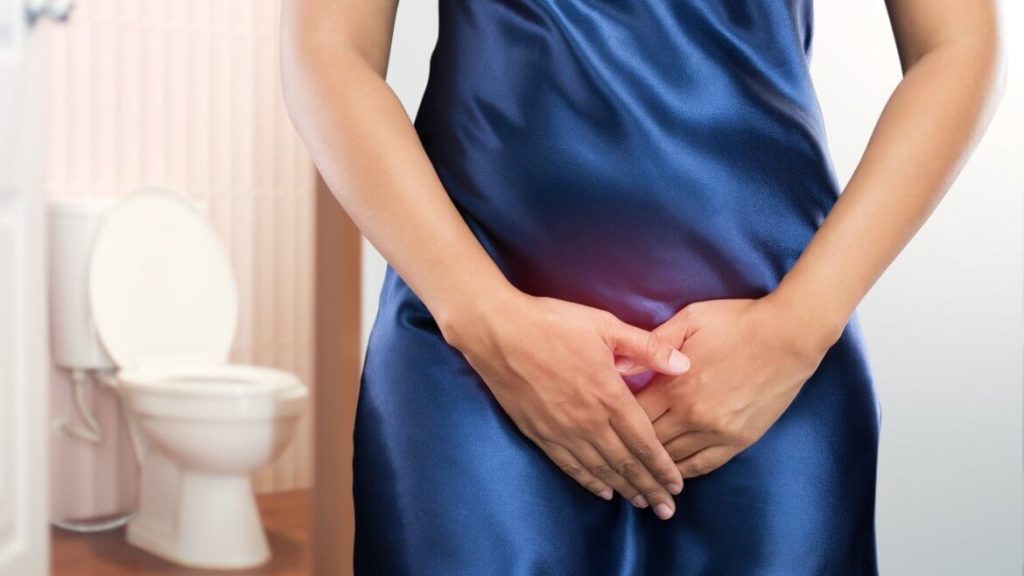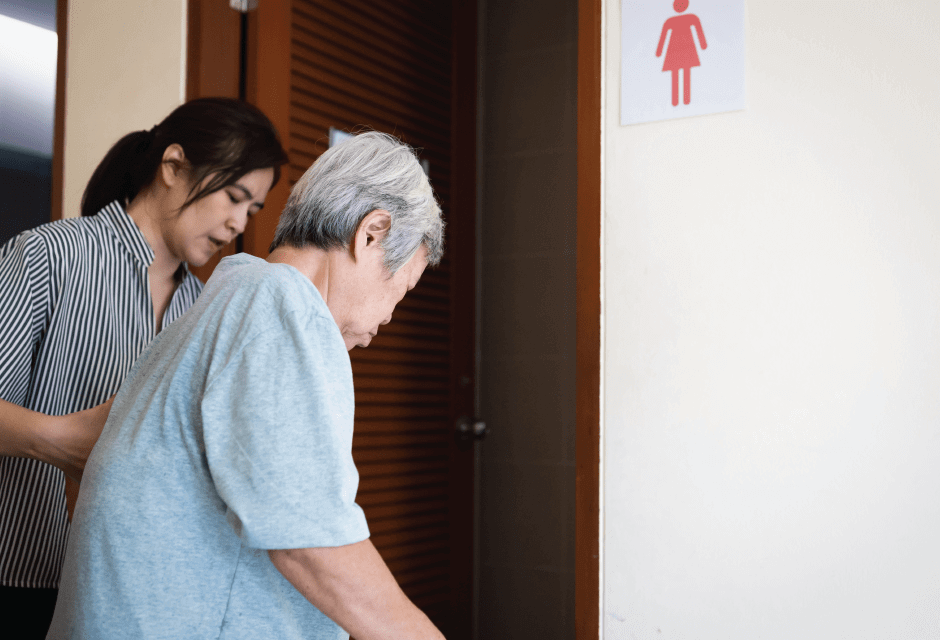What is urge incontinence?

Urge incontinence is the loss of control over urination. This diminished bladder control is characterized by the loss of urine after a sudden event such as a cough or sneeze or even the full inability to control one’s urination. Individuals who feel a sudden urge to urinate and involuntarily suffer urine leakage likely have urge incontinence. Though this condition is not formally considered to be a medical disease, it is an indication of an underlying issue.
Also known as an overactive bladder, urge incontinence is slightly different in definition. An individual with an overactive bladder feels the urge to urinate yet he or she is not guaranteed to leak urine as a result of the condition. Let’s take a look at the causes, symptoms and treatments for urge incontinence.
What can cause urge incontinence?
Urge incontinence is often caused by a bladder that abnormally contracts. The powerful muscles referred to as sphincters are meant to control the movement of urine as it is transmitted through the bladder. Urge incontinence results in the muscles of the overactive bladder forcefully contracting, essentially overriding the strong sphincter muscles within the tube that removes urine from the body. This tube is referred to as the urethra.
Such abnormal bladder contractions can result from bladder irritation and improper functioning due to nerve damage stemming from diseases such as Parkinson’s Disease or multiple sclerosis. It is also possible that the bladder is simply irritated. In other cases, the patient’s urge incontinence is the result of spinal cord damage.
What is urge incontinence like?
Individuals plagued by urge incontinence feel the sudden urge to go to the bathroom. These individuals also experience the undesired and uncontrolled loss of urine at random times. Such a patient might also experience undesired loss of urine when sleeping or when out in public.

Is urge incontinence preventable?
It is possible to reduce the chances of developing urge incontinence. However, the methods of potential prevention as detailed below are not guaranteed to work. As an example, pelvic floor exercises certainly help boost pelvic muscle strength. Those looking to prevent this condition are also encouraged to avoid the consumption of acidic foods, alcohol and caffeine. Consume more fiber to prevent constipation, resist the temptation to smoke and you will rest easy knowing you have done your part to prevent urge incontinence.
It is also worth noting some of those with urge incontinence report the consumption of foods other than those noted above contributed to the condition. Examples of additional foods to avoid to prevent urge incontinence include tomatoes, citrus fruits, citrus beverages, artificial sweeteners, chocolate and spicy foods.
Above all, drink a sufficient amount of liquid throughout the morning and day hours. Urinating every couple hours is annoying yet it is healthy and prevents dehydration. Drink enough fluids and your urine will have a pale yellow hue.
How it works
Book your appointment
Your Information is Safe
Peace of mind for loved ones
Does urge incontinence disappear?
No. It is quite rare for urge incontinence to dissipate on its own. However, you can relieve the symptoms of urge incontinence by being proactive. Understand the type of urge incontinence you have, consult with your doctor and you will have a chance to mitigate its symptoms.
How to treat urge incontinence
Urge incontinence is treated with a plethora of treatment modalities. Examples of those modalities include electrical stimulation, medications, behavior treatments and even surgery. However, surgery is the last resort. Biofeedback is a good example of behavioral treatment for urge incontinence. This feedback makes it easier to learn how the body behaves, meaning it is that much easier to identify red flags when it is malfunctioning. Biofeedback really will help you determine when your bladder is overactive.
Bladder training and timed voiding are the two primary biofeedback techniques used to treat urge incontinence. Record the times throughout the day and night when you urinate with a chart. Use this information to identify patterns in leakage and you will be able to identify overactivity and also avoid leakage down the line by heading to the bathroom at specific times.
Kegel exercises, also referred to as pelvic floor exercises bolster muscle strength to hold the bladder, bowels and uterus in place. The strengthening of these muscles helps to minimize issues such as urine leaks. You can stop the urine flow with this type of exercise by pretending that you are halting that flow or attempting to avoid passing gas. This strategic approach contracts pelvic floor muscles. Try to keep your ab muscles, buttocks and legs still while performing kegel exercises. Ideally, kegel exercises will be performed on a daily basis in sets of five.
If necessary, your doctor will recommend surgical or medical treatment for urge incontinence. Though behavioral alterations such as bladder training and timed voiding have the potential to minimize urge incontinence symptoms, the doctor might also determine that surgical treatments or medical treatments are required. This approach will help to relieve the symptoms and the inherent inconvenience of urge incontinence.
As an example, the use of medications for urge incontinence such as Fesoterodine, Darifenacin, Mirabegron, Trospium, Tolterodine, Solifenacin, Oxybutynin and Oxytrol are available for these suffering from urge incontinence. There are also medications for urge incontinence that facilitate the control of bladder spasms. Examples of those medications include Spasmoject, Antispas, Anaspaz, Hyospaz, Levsin, Hyosol, Levbid, Byclomine, Bentyl and Di-Spaz.
If medications and behavioral treatments do not reduce urge incontinence symptoms, there are additional options for treatment including Botox. Botox can be injected into the muscles of the bladder, helping it to relax and also boosting its storage capacity to minimize leakage episodes. Electrical stimulation with sacral nerve stimulation is also an option. This stimulation is centered on the use of an electronic device implanted within the back. There is no reason to fear this procedure as it is minimally invasive. The device transmits an electric signal directly to the sacral nerve. The purpose of this signal is to help better control the muscles of the bladder and reduce the frequency of abnormal contractions.
Stimulation in the form of the percutaneous tibial nerve variety might also help minimize urge incontinence. This stimulation involves the application of an electric current to the patient’s ankle. To be more specific, the electric current is added to the tibial nerve of the ankle. This nerve is targeted as it is believed that it affects the manner in which the bladder contracts.
Though few know it, it is possible to add diminutive electrodes within the patient’s rectum or vagina to treat urge incontinence. The logic in using such electrodes is that they generate electric pulses that spur the urethra and pelvis muscles to contract. Such muscle contraction bolsters muscle strength all the more, helping to decrease the frequency of urge incontinence.
Surgery will be considered if the medical treatments, medications and behavioral therapies detailed above are not successful. Surgical procedures that have helped urge incontinent care patients live a more enjoyable and higher-quality life include procedures to divert the movement of urine and those that minimize nerve impulses for enhanced muscle control. There is also a surgical option to enhance the bladder’s storage capacity, ensuring it can hold that much more fluid, ultimately minimizing the chances of urine leaks.

